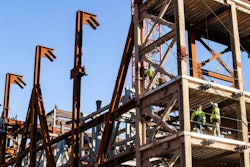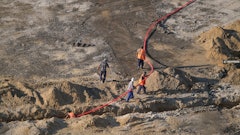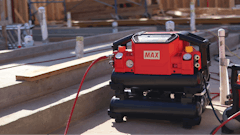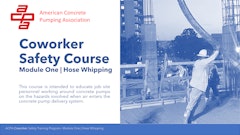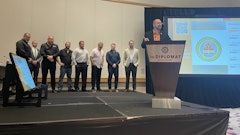
 Ken Serviss, Executive Director, Allied Trades Assistance ProgramAllied Trades Assistance Program
Ken Serviss, Executive Director, Allied Trades Assistance ProgramAllied Trades Assistance Program
“I am only here because this program existed,” Serviss shares, noting how ATAP saved his life when he was struggling with substance use. As a product of an Employee Assistance Program (EAP), Serviss embodies the effectiveness of these services and is now in a position to guide others toward recovery. Under his leadership, ATAP has grown into a lifeline for tens of thousands of union members and their families.
Why Programs Like ATAP are Essential
Founded in 1992, ATAP serves 46 local unions and provides critical services to 50,000 members and 100,000 covered lives, including dependents. The reach of the program is vast, but its importance is even greater. The opioid epidemic, which began to heavily affect the construction industry in the late 1990s, continues to wreak havoc on workers, their families, and the workforce at large.
“Through our program, we’ve seen the number of cases with opioid use disorder jump from 200 to 2,000 annually,” says Serviss. “This disease has the potential to destroy not only careers but also families. The need for comprehensive, accessible support is more urgent than ever.”
ATAP provides a range of services to meet this need, including:
- A 24/7 dedicated toll-free Employee Access Helpline
- Training and education programs
- EAP clinical services
- Behavioral health management
- Referrals and aftercare planning
- Peer advocate programs and building trades support groups
- Crisis management and debriefing
"Cultural change within the construction industry is key to reducing opioid risk."
—Ken Serviss, Executive Director of the Allied Trades Assistance Program
These services help workers navigate addiction, mental health challenges, and the ongoing impact of the opioid epidemic. With its broad geographic reach throughout Pennsylvania, New Jersey, Delaware, and beyond, ATAP is uniquely positioned to address the crisis.
Serviss’ personal recovery journey gives him a unique ability to connect with union members. “I understand the obstacles that each member is facing. I’ve worked through the weather conditions, financial stressors, and pain that they’re facing. My lived experience allows me to develop programs that truly fit the specific needs of the membership.”
This understanding is critical, as construction workers often face barriers to seeking help, including stigma and fear of job loss. Serviss’ story of overcoming these challenges through an EAP gives hope to workers who might feel isolated or unsure of where to turn.
 Ken Serviss, Marianne Wolfe and the Philadelphia Building Trades Safety CommitteeAllied Trades Assistance Program
Ken Serviss, Marianne Wolfe and the Philadelphia Building Trades Safety CommitteeAllied Trades Assistance Program
Join the Movement: SAFE Project & the Path Forward
 The staff of the Allied Trades Assistance Program. From left to right Naomi Margiotta (Claims Representative), Robyn Tutela-Zarli (Client Care Representative), Marianne Kochersperger (Claims/Client Care Representative), Marianne Wolfe (Managed Care Supervisor), Ken Serviss (Executive Director), Heather Russell (Senior Client Care Coordinator), Tina Rowan-Coll (Client Care Manager), and Joe Carey (ILA Pier Counselor).Allied Trades Assistance Program
The staff of the Allied Trades Assistance Program. From left to right Naomi Margiotta (Claims Representative), Robyn Tutela-Zarli (Client Care Representative), Marianne Kochersperger (Claims/Client Care Representative), Marianne Wolfe (Managed Care Supervisor), Ken Serviss (Executive Director), Heather Russell (Senior Client Care Coordinator), Tina Rowan-Coll (Client Care Manager), and Joe Carey (ILA Pier Counselor).Allied Trades Assistance Program
SAFE Project offers comprehensive resources such as naloxone training, harm reduction strategies, and substance use disorder (SUD) education. Their SAFE Workplaces initiative helps businesses implement recovery-friendly policies, reduce stigma, and provide life-saving tools like naloxone on job sites. Together, ATAP and SAFE Project are creating a model for how the construction industry can not only survive but thrive in the face of this ongoing crisis.
For Serviss, the mission is clear: “Cultural change within the construction industry is key to reducing opioid risk. We need to work together to support Employee Assistance Programs and develop policies that emphasize education, treatment, and recovery.”
The importance of programs like ATAP cannot be overstated. They are changing—and saving—lives every day. If your organization is ready to make a difference, SAFE Project offers the tools and guidance needed to help workers and families affected by opioid addiction.








